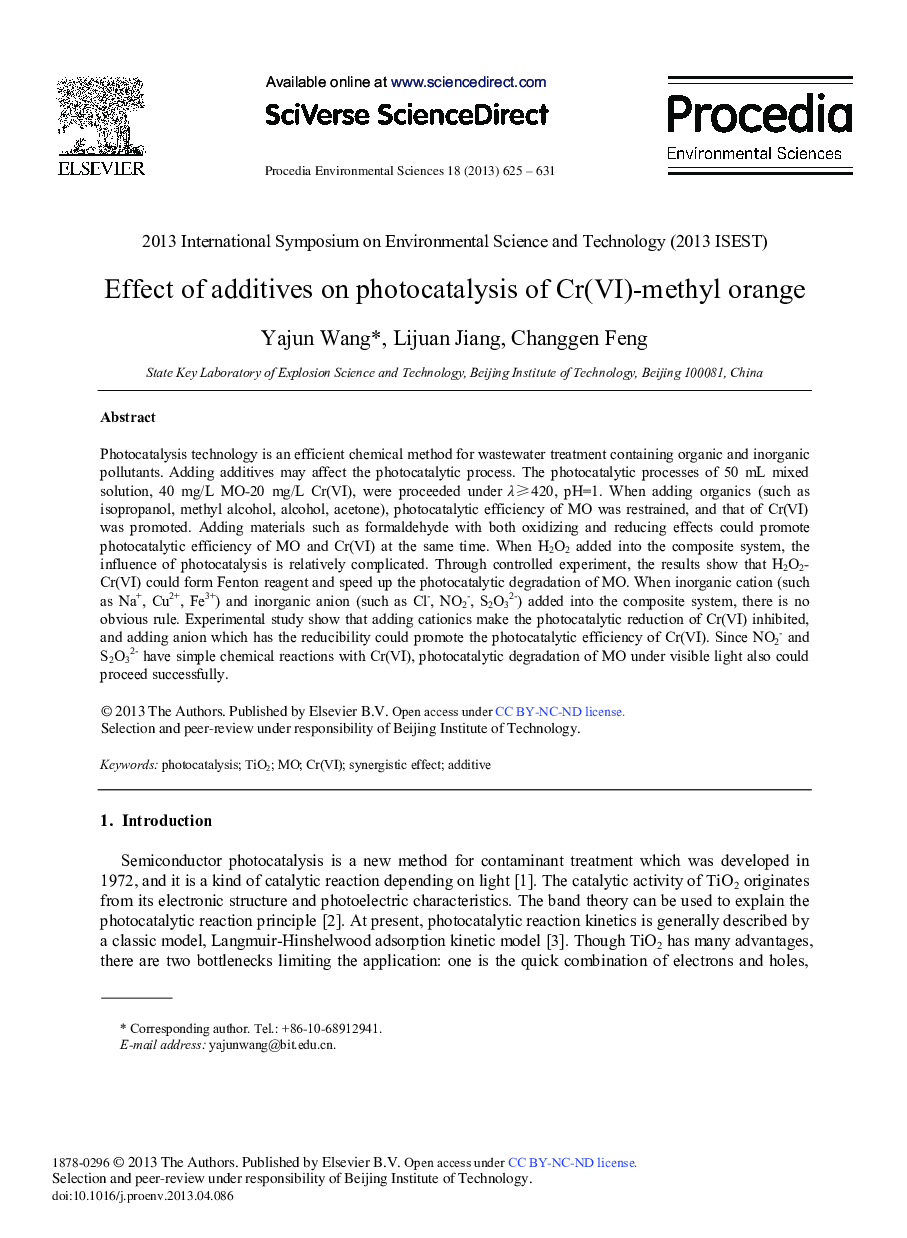| کد مقاله | کد نشریه | سال انتشار | مقاله انگلیسی | نسخه تمام متن |
|---|---|---|---|---|
| 4403018 | 1618626 | 2013 | 7 صفحه PDF | دانلود رایگان |

Photocatalysis technology is an efficient chemical method for wastewater treatment containing organic and inorganic pollutants. Adding additives may affect the photocatalytic process. The photocatalytic processes of 50 mL mixed solution, 40 mg/L MO-20 mg/L Cr(VI), were proceeded under λ≥420, pH=1. When adding organics (such as isopropanol, methyl alcohol, alcohol, acetone), photocatalytic efficiency of MO was restrained, and that of Cr(VI) was promoted. Adding materials such as formaldehyde with both oxidizing and reducing effects could promote photocatalytic efficiency of MO and Cr(VI) at the same time. When H2O2 added into the composite system, the influence of photocatalysis is relatively complicated. Through controlled experiment, the results show that H2O2-Cr(VI) could form Fenton reagent and speed up the photocatalytic degradation of MO. When inorganic cation (such as Na+, Cu2+, Fe3+) and inorganic anion (such as Cl-, NO2-, S2O32-) added into the composite system, there is no obvious rule. Experimental study show that adding cationics make the photocatalytic reduction of Cr(VI) inhibited, and adding anion which has the reducibility could promote the photocatalytic efficiency of Cr(VI). Since NO2- and S2O32- have simple chemical reactions with Cr(VI), photocatalytic degradation of MO under visible light also could proceed successfully.
Journal: Procedia Environmental Sciences - Volume 18, 2013, Pages 625-631